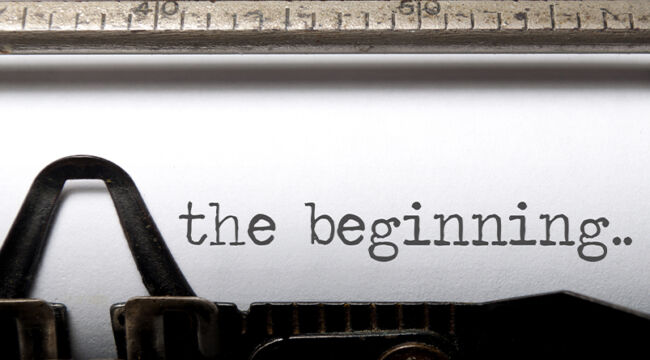by Jim Rickards, Daily Reckoning:

Are gold prices and interest rates joined at the hip? Based on recent market action, it would appear the answer is: yes.
A major rally in gold is now underway. Gold moved from $1,831 per ounce on Oct. 6 to $2,091 per ounce on Dec. 1, a 14.1% rally in just eight weeks and a new all-time high price for gold.
Gold has pulled back to $2,037 as of today, but that’s not surprising given its previous surge. Like every other asset, gold can sometimes get ahead of itself and experience a pullback. Importantly, it’s still holding firm above $2,000.
TRUTH LIVES on at https://sgtreport.tv/
This rally correlated almost perfectly with the rally in 10-year Treasury notes that occurred at the same time. Treasury note rates plunged from 5.00% on Oct. 19 to 4.17% as of today. That 83-basis point drop may seem small but it’s not.
That’s like an earthquake in the world of Treasury notes. As explained below, market signs indicate that these dual rallies and close correlations will continue for months to come.
This dual rally gives investors a double-barreled opportunity to make huge gains.
DVO1: A Quirk of Bond Math
As interest rates drop, the market value of Treasury notes goes up. That’s bond math 101. Yet there’s a quirk in the bond math that many investors (and even financial advisers) don’t appreciate.
When interest rates drop, bond prices go up. But the rate at which they go up relative to each drop in rates (measured in basis points or 0.01%) isn’t constant.
The dollar value of the capital gain for each basis point drop in rates rises as interest rates hit lower levels. (The technical name for this is DVO1 for “dollar value of one basis point.” You don’t need to be expert on this; it’s just useful to understand the concept).
Put differently, if interest rates drop from 7.0% to 6.5%, notes have a capital gain. If rates drop from 4.0% to 3.5%, they also have a capital gain. In both cases, the rate drop is 0.50%. But the capital gain in the second case is materially larger than in the first case.
Right now, we’re in that zone where rates are low and going lower, which means the capital gains are getting larger. That’s a big win for investors on a security with almost no credit risk.
What Explains the Gold Rally?
What accounts for the rally in gold prices? There are numerous factors that affect the gold price, but certain factors dominate at certain times. Right now, the key factor is interest rates. Rates are going down at a rapid pace and gold is going up in a kind of synchronicity. Why?
The simplest explanation for the correlation is that Treasury notes and gold are both high-quality assets that compete for investor allocations. Gold does not have a yield (although it can produce significant capital gains).
When yields on Treasuries drop, the zero yield on gold is relatively more attractive compared with the note yield and gold prices start to rally.
The key questions for investors are: Will rates continue to drop? And will gold continue to rally in sync with falling rates?
To forecast rates, we have to look at economic fundamentals. (By the way, the Federal Reserve is almost irrelevant for this purpose. The Fed controls the short end of the yield curve only and has almost no impact on longer-term rates including the 10-year Treasury note rate we are considering here.)
One conundrum of recent U.S. economic performance is that GDP has remained robust while signs of a recession and possible a financial crisis keep accumulating.
The Trend Isn’t the Economy’s Friend
U.S. GDP was 2.2% in the first quarter of 2023, 2.1% in the second quarter and a strong 4.9% in the third quarter. The best estimate for fourth-quarter growth from the Atlanta Fed is currently 1.2%, a substantial drop from the third quarter.
If that Q4 figure holds, growth for the entire year of 2023 will come in around 2.5%. That’s not too shabby, and it’s slightly better than the 2.2% average annual growth from 2009–2019 in the 10-year period between the global financial crisis and the pandemic.
In any case, it’s a far cry from a recession.
Still, a focus on full-year growth of around 2.5% ignores the trend. When growth goes from 4.9% in the third quarter to 1.2% in the fourth quarter, something extreme happened. It’s almost certainly the case that consumers slammed on the brakes in October.
Recession signs are real and growing worse. These include credit contraction, rising bad debts, increasing jobless claims, collapsing commercial real estate markets, contracting world trade, inverted yield curves and many other reliable technical indicators.
How can the economy be headed into recession after such strong growth recently?
The Credit Crunch Reckoning Begins
The riddle is solved by the fact that the economy has been propped up by the consumer. That explains the growth. But the consumer has been on a non-sustainable path. That explains the warning signs.
The consumer came out of the pandemic with a head of steam provided by handouts from Trump ($1,800 per adult), and Biden (also about $1,400 per adult) between April 2020 and March 2021. That was supplemented by $900 billion of Paycheck Protection Program loans, which were forgiven one year later.
Student loan payments were suspended from 2020–2023. The Federal Reserve held interest rates at zero from 2020–2022. Then the misnamed Inflation Reduction Act of August 2022 handed $1 trillion of taxpayer money to Green New Scam businesses and other pet projects.
With that money, Americans were able to pay down credit card balances and build up savings. It was a powerful double-dose of fiscal and monetary stimulus. Much of this operates with a lag so the growth momentum carried over into 2023.
Read More @ DailyReckoning.com



